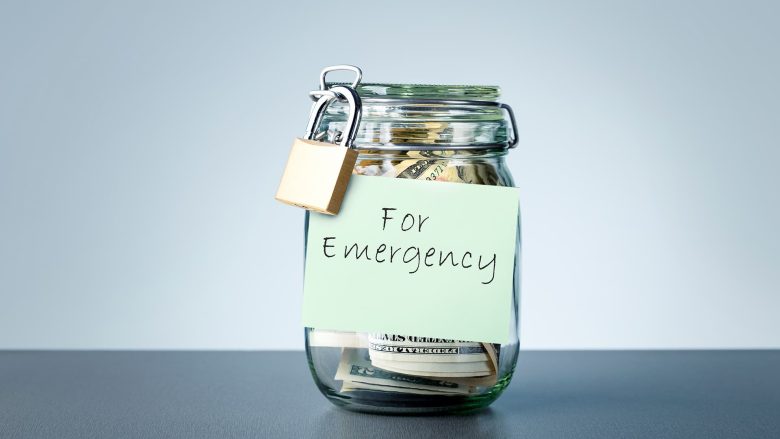Building an emergency fund may not seem fun, but it’s one of the smartest financial moves you can make. An emergency fund provides protection from sudden financial shock while helping avoid debt and costly mistakes in the future. By following these five straightforward steps, you can start building your emergency savings and avoid dipping into it by setting realistic goals, automating savings processes, and keeping an eye on progress.
1. Open a Savings Account
Experts advise saving three to six months’ worth of expenses as an emergency fund. In an unstable financial environment, having this extra buffer can ease any unexpected events, such as being involved in an accident, losing your job, or having unexpected medical costs or repairs come up.
Start with an expense analysis and savings goal-setting session. If the prospect of saving several months worth of expenses seems overwhelming, set smaller targets over time that add up to reach your ultimate long-term objective. Choose an account separate from what you use for daily spending to help ensure emergency funds remain out of sight and out of mind—this makes reaching your goals easier!
2. Set a Goal
Saving several months’ expenses may seem like a daunting task, but it can be accomplished with discipline. Use a budgeting tool or keep receipts and bank statements to track spending and categorize necessary versus unnecessary purchases.
Look for opportunities to save additional amounts, like tax refunds, bonuses, cash gifts from family, inheritance, or winnings. Store this additional wealth in an FDIC-insured savings account that’s easily accessible.
3. Review your Budget
Save for an emergency fund as a top priority by making adjustments to your budget to find additional funds, whether this means dining out less frequently, cancelling unneeded subscriptions, or finding cheaper entertainment alternatives.
Consider utilizing unexpected income sources such as bonuses, tax refunds, or inheritances to gradually increase your savings account, thereby preventing the need to resort to credit cards or loans during emergencies.
4. Automate your Savings
Financial experts often recommend creating an emergency fund that covers three to six months of expenses; however, this goal may seem intimidating when living paycheck to paycheck.
Automating your savings makes saving easier; simply transfer a set amount from your checking account each month into your savings or money market account, or consider services like Debit Card Round-Up that automatically move a portion of each purchase directly into your primary savings account. Consider all windfalls, such as your tax refund or cash gifts given as birthday and holiday presents, and set aside at least some portion.
5. Set Aside “Found” Money
Establishing an emergency fund is one of the best ways to safeguard yourself against financial hardship. From car repairs and job losses to unexpected bills like childcare costs, having an emergency fund will protect against high-interest debt payments when an unforeseen expense arises.
Financial experts advise saving enough to cover three to six months of expenses. You can build savings by cutting spending elsewhere, like by downsizing cell phone plans and cancelling subscription services, or taking on side hustles such as tutoring, pet sitting, or ridesharing as a side business to bring in extra income. It’s essential not to overfund your emergency account and use its contents only in true emergencies.
6. Avoid Overfunding
Many experts advise establishing an emergency savings cushion equal to three to six months worth of expenses, which may seem overwhelming at first. Start small by setting goals like saving $100 or $500; reaching these smaller milestones will build momentum and motivate you to keep saving.
Save more by cutting unnecessary expenses or increasing income through side hustles, part-time jobs, or selling unwanted items. Maintain a balance with other financial goals and regularly review your emergency fund as your circumstances change.
7. Don’t Rely on Credit Cards
An emergency fund provides peace of mind and financial security during unexpected circumstances like unexpected medical bills or job loss and can reduce reliance on credit cards with their high interest rates, making paying off debt more challenging.
Saving for an emergency fund may seem intimidating, so make it simple by setting an achievable goal of three to six months’ expenses as your goal and determining how much savings per month. In order to reach it, consider cutting down on dining out or cancelling unneeded subscriptions until your goal has been reached.
8. Make it a Priority
Emergency funds can provide essential protection in case of unexpected expenses such as car repairs, major medical bills, or job loss. Experts advise setting aside three to six months worth of expenses through budgeting, automated savings plans, or windfalls like tax refunds or bonuses to build or rebuild emergency funds over time.
Saving can take time, but making savings a priority will ensure you can be ready in case of an emergency. An emergency savings account also helps avoid using credit cards to cover unexpected expenses that could harm long-term financial goals.
9. Don’t Stop Saving
Rebuilding an emergency fund may take months or years, but it’s essential not to give up. Find ways to keep savings steady, such as setting aside a small amount each week, setting up automatic transfers, or saving portions of raises or bonuses directly into an emergency savings account.
Keep emergency funds available only for actual emergencies; use them only when absolutely necessary! Review and adjust savings goals as your life changes.




